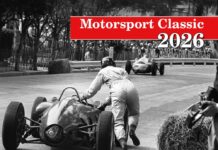As with any form of sport, every once in a while an exceptional talent will emerge and their skill and contribution will be recalled within the annals of the sport. Over the past century motor racing has seen numerous drivers who exhibited exceptional abilities that other competitors can only marvel at. While grand prix drivers, at the top of their profession, are often considered exceptional, there are drivers who, when permitted by the rule-makers, swapped from Formula 1 to sportscars and even saloon cars with equal success; Jim Clark and Graham Hill to name but two. Included in this list is a Mexican driver, Pedro Rodriguez.

Pedro Rodriguez – Porsche 917K – BOAC 1000K
He was someone who could race and win in any category but he was better known for his legendary exploits in sportscars. It was a race held at Brands Hatch in 1970 that made the establishment sit up and take notice of him. Pedro was signed by John Wyer to drive the notoriously difficult Gulf-Porsche 917K, a 5-litre, 400kph monster that required drivers of execptional skill to unlock its full performance. In April 1970 the third round of the 1970 World Sportscar Championship, the 6-hour BOAC 1000km, was held at Brands Hatch in Kent, a narrow circuit that was not ideally suited to the mighty 917 that relied on long straights to use its awesome top speed. During practice and qualifying the weather was sunny and dry but the 917 of Rodriguez and his co-driver Leo Kinnunen suffered mechanical issues, qualifying seventh on the grid while Chris Amon secured pole position in his Ferrari 512.
But race day dawned cold, dark and very, very wet; rain fell constantly, flooding the circuit and casting doubt on whether it was safe to start the race. Eventually the decision was made and the field set off in cloud of spray. Inevitably a spinning car brought out the yellow flags warning drivers to slow but such were the conditions that Pedro Roriguez failed to see the flags and continued at racing speed. He was black-flagged by the clerk of the course (he also failed to see that flag for two laps) but eventually arrived at speed into the pit lane. A very unhappy official then sternly reprimanded him, accusing him of dangerous driving but all the while Pedro refused to make eye contact as he felt he was being unjustly penalised. Aware he was losing precious time, he grew ever more angry and stormed from the pit lane having lost almost a full lap. The race became known as “The race where nobody told Pedro it was raining” as he reeled off a series of lap times that would have been impressive in the dry. As it was a two-driver race, his co-driver had to take over as the rules dictated but his lap times were considerably slower despite his abilities in rally cars as well as sports cars.
Pedro was running on adrenalin and leapt back into the cockpit as soon as it was permitted, continuing to circulate at barely believable speeds. The rain continued to fall for more than four of the six hours but the track remained wet and slippery throughout. When the chequered flag was mercifully waved after six hours, Pedro had lapped the field five times despite the presence of two of the finest wet weather drivers in the sport, both of whom were driving 917s. It was a race that will live in the memory of everyone who witnessed it and every professional race driver took note of what had happened; Pedro’s exceptional talent was now recognised.
The photograph above shows Pedro in full flow in his Gulf-Porsche 917K but this was one of only a few photos I was able to take during the race. Due to the incessant rain my main camera, a 6x6cm Mamiya C3, soon became water-logged and jammed and my spare 35mm camera quickly suffered the same fate. I was left to stand and watch one of the great drives of the era despite being soaked to the skin.
From ‘Moments in Motorsport’ by Trevor Legate.










